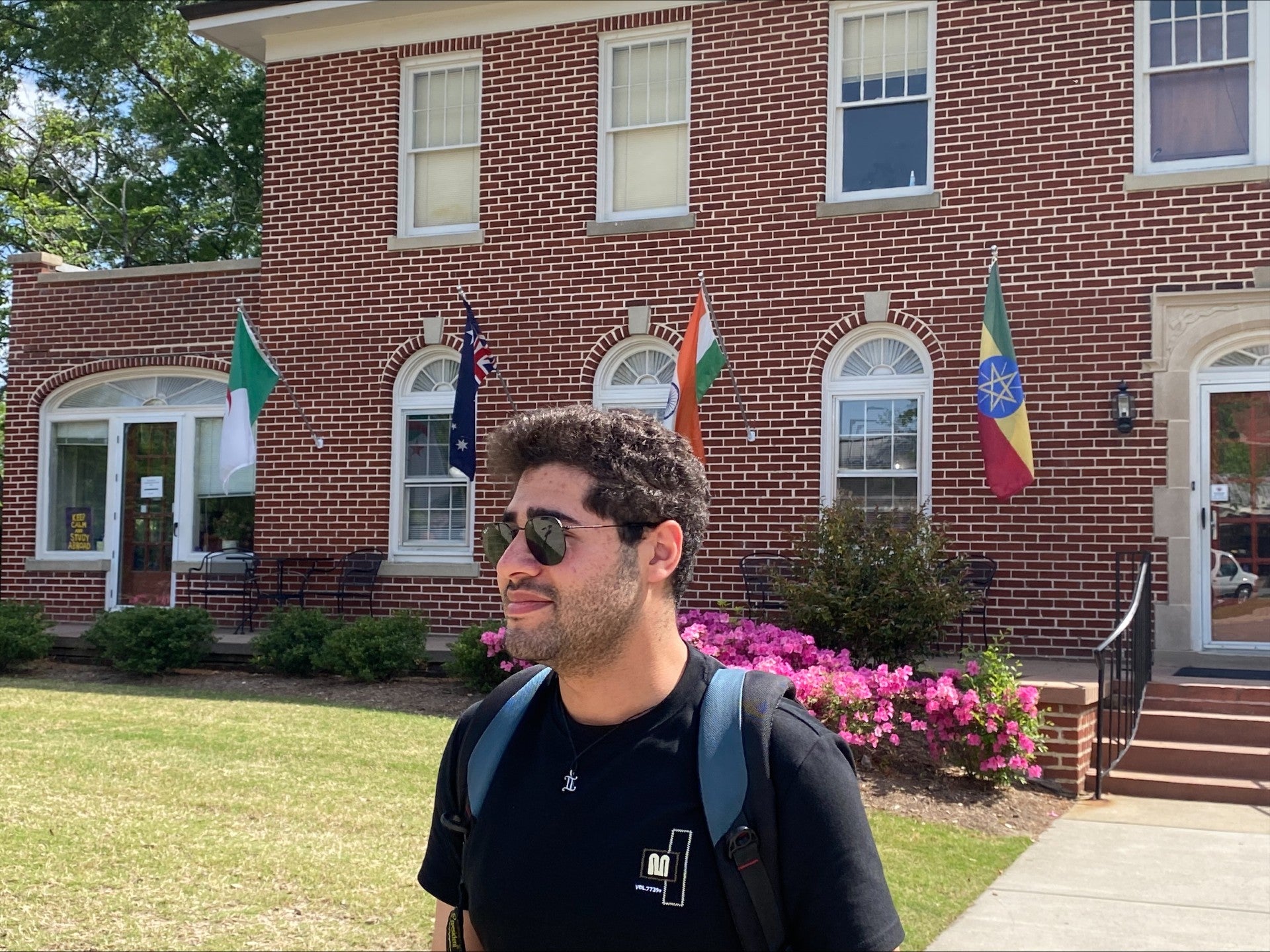by Darian Hale & Diego Lerma
(Office of International Enrollment and Engagement ‘Where have you come from? map. Photo by Darian Hale)
East Carolina University lags behind every state university in North Carolina in terms of International students. While universities across North Carolina welcome thousands of international students.ECU remains a quiet outpost for global learners.
Despite this, ECU’s international number of students is growing. During the last academic school year, ECU has had the largest number of international students since the COVID-19 pandemic.
In fall 2024, ECU had 243 international students and 240 this spring semester 2025. This number is almost 100 more than during fall 2020, when ECU had only 160 international students enrolled.
With only around 240 international students enrolled this spring, ECU’s international presence is noticeably small compared to state peers like Duke University and NC State, each of which hosts more than 4,000 students from abroad, according to a Duke international enrollment report.
The university with the largest number of international students in the state is the University of North Carolina at Chapel Hill. According to the National Association for Foreign Student Affairs, during the 2022-2023 academic year UNC Chapel Hill had over 2,600 international students.
“If you look at UNC, Charlotte or NC State, the vast majority of their international students are graduate students,” said Kathy Knudson, director for International Enrollment and Engagement at ECU.
This is because other universities have a different funding model that provides more opportunities compared to ECU, explained Knudson.
Knudson added that the most popular countries for international students who come to ECU are Nigeria and Saudi Arabia.
Knudson said the Saudi students are often supported by government sponsorship and funneled into programs such as the School of Hospitality Leadership, while Nigerian students often find ECU through word of mouth.
“If we’ve noticed an uptick in applications from a specific country, then we’ll look more closely to see why,” said Knudson. Sometimes this can come from a tie to an ECU professor or other reasons.
Knudson said the population of Nigerian students has grown exponentially during the past five years. According to the ECU data, in the fall 2020, ECU had only two international Nigerian students compared to the 10 such students now at ECU.
The biggest hurdle for international students has to do with affordability.
“The biggest challenge in recruiting international students is the high cost and lack of scholarships, especially at the undergraduate level,” Knudson explained. “Graduate students have more funding options, including graduate assistantships and [paid] tuition. . . which are not available for undergraduates.”
While international student tuition and spending contributes hundreds of millions of dollars to North Carolina’s economy, Duke University accounts for $273.5, according to Duke University’s Global office.
ECU’s contribution is far smaller, reflecting its limited international footprint with fewer students.
But for students like Hasan Alghafli, a hospitality management major from Saudi Arabia, ECU’s small size and approachable campus were part of the appeal.
Hassan Alghafli outside the International House. Photo by Darian Hale
“I chose ECU because it had the program I was looking for, and it seemed like a welcoming and affordable place to study,” Algahfli explained. “It’s not a huge, overwhelming campus, it’s easier to adjust and focus on school.”
That sense of welcome, however, sometimes competes with feelings of isolation.
“I expected more [international students],” Alghafli noted. “You do see international students around, but it’s not as many as I thought for a university this size.”
That perception is backed by the numbers. According to College Factual, international students represent less than 1% of ECU’s total enrollment, compared to Duke’s 20% and NC State’s 12%.
Office of international enrollment and engagement. Photo by Darian Hale
Kehinde “Kenny” Olufowobi, a graduate student from Nigeria studying accounting and data science, found that the lack of an international student community has made his transition harder.
“It can be a bit isolating at times, especially when you’re trying to adjust and find your place in a new environment,” said Olufowobi.
Knudson noted that ECU is working to provide more tailored support through cultural programming and community-building events.
“We sponsor coffee hours every semester, open to both international and domestic students,” Kudson said. “We also organize cultural trips to places like Washington D.C., and the Outer Banks to give students meaningful experiences.”
Olufowobi acknowledged the existence of support structures like the Office of Global Affairs but said they are not always accessible or well-promoted.
“Finding cultural or community spaces that reflect my background can be a bit difficult. Unless you actively go looking or already know someone, it’s easy to feel disconnected,” said Olufowobi.
He noted that events like International Week and cultural fairs are valuable but often lack strong participation from the wider campus.
National flags hang over ECU’s Office of International Enrollment and Engagement. Photo by Darian Hale.
“It sometimes feels like these events are attended mostly by international students ourselves, rather than being a campus-wide celebration.”
Recent institutional changes may further challenge ECU’s international recruitment efforts, such as the upcoming closure of the University’s Language Academy, according to Hamid Alz, another hospitality major from Saudi Arabia.
“That shows there might not be much focus on bringing in more students from abroad,” he said. “And yes, there seem to be fewer international students here than I expected, especially when compared to other universities.”
Despite these challenges, Knudson emphasized that ECU has a strategic plan in place to do more.
“We operate on a three-year recruitment plan, targeting countries like Ghana, Nigeria, Colombia and Vietnam,” Knudson explained.“We base our approach on organic growth, faculty ties, and purchasing power in those regions.
Despite these challenges, ECU has earned national recognition for its global engagement efforts, including the 2023 Senator Paul Simon Award for Comprehensive Internationalization. The university also reported a 24% increase in international enrollment for fall 2024.
Still, as universities across North Carolina compete to grow their global influence, students say ECU must do more than offer degrees and support services.
“It’s about building a community,” said Olufowobi, “and making international students feel seen beyond the classroom.”










